
SEO Analytics: A Step-By-Step Guide to Success
SEO analytics can assist in optimizing your website for success. In this blog, we have discussed the importance of mastering SEO analytics for digital success. Explore key metrics and Google Analytics integration, and stay updated with SEO trends. Elevate your SEO strategies with data-driven insights and achieve measurable results in the ever-evolving digital landscape.
Do you find yourself overwhelmed by SEO data, unsure how to translate it into actionable insights? This is a common challenge, but with the right approach, you can transform data into a powerful tool for optimizing your website.
At its core, SEO analytics encompasses collecting and examining data related to a website’s performance in search results. This data reveals how a website is currently performing and shines a light on untapped opportunities and areas needing improvement.
Given the dynamic nature of search engine algorithms, understanding these analytics becomes pivotal in navigating the digital landscape effectively. Throughout this guide, we’ll delve into the intricacies of SEO analytics and explore how search engines, particularly Google, assess and rank websites, empowering you to make informed decisions for your online presence.
What is SEO Analytics?
SEO analytics refers to the process of gathering and analyzing data from your website to evaluate and enhance your SEO efforts. It helps you understand what’s performing well and what areas need improvement in your strategy. This involves monitoring critical SEO metrics, uncovering opportunities, and using data-driven insights to boost your site’s organic search visibility. SEO analytics emerge as a cornerstone for strategic decision-making, offering invaluable insights that drive success. Businesses gain a profound understanding of online performance by dissecting data intricacies and shaping tailored strategies for maximum impact.
- Guiding Decisions:
- Measuring Success:
- Amplifying Impact:
SEO Dashboard provide insights for informed choices and navigating businesses through online complexities.
Data-driven metrics quantify SEO and content performance, shaping strategies for engagement and reach.
Beyond rankings, SEO analytics optimize conversions and ROI, empowering marketers to craft impactful campaigns.
What SEO Analytics Is Not
While SEO analytics provides valuable insights into your website’s performance, it’s just as prior to understand what it doesn’t do:
- Not a One-and-Done Task:
- Not Just About Rankings:
- Not Merely About Traffic Volume:
- Not Limited to Organic Search:
- Not a Shortcut to Instant Results:
SEO analytics isn’t something you set up once and forget. With constant algorithm changes and shifting user behavior, incessently tracking and optimization are essential.
SEO analytics goes beyond simply monitoring keyword place. It helps reveal the why behind those rankings and how users are engaging with your content piece.
It’s not just a visitor count. SEO analytics dives into who your visitors are, where they come from, their intentions, and how they behave on your site.
Although focused on non-paid results, SEO analytics often integrates data from paid channels and other digital campaigns to offer a detail performance view.
SEO analytics is a strategic tool—not a magic spring. It guides decisions with data, but sustainable SEO success requires time, effort, and adaptability.
By deep understanding what SEO analytics isn’t, marketers can use it more strategically—avoiding misconceptions and focusing on valuable insights that lead to long-term growth.
How to Get Started with SEO Analytics
Getting started with SEO analytics may seem complex at first, but by following a clear process, anyone can take confident steps toward improving their search visibility.
1. Set Clear SEO Objectives
Before diving into data, define exactly what you want to achieve. Are you aiming to increase organic traffic, boost conversion rates, or outrank competitors for specific keywords? Setting measurable goals ensures your SEO analysis is focused and effective.
Initial steps:
- Baseline Metrics:
- Target Outcomes:
Know where you stand today—track current organic traffic, bounce rate, and conversions.
Instead of vague goals, set specific ones like “increase organic traffic by 15% in Q3.”
2. Select the Right SEO Tools
Choose tools that align with your goals and budget. Platforms like Google Analytics, Semrush, Ahrefs, and Moz offer different strengths—from traffic analysis to backlink audits and keyword tracking.
3. Perform Keyword Analysis
Start by analyzing relevant keywords—look at search volume, difficulty, and current rankings. Keyword tracking tools help you identify gaps and new ranking opportunities.
Tips:
- Target Long-Tail Keywords:
- Identify Keyword Gaps:
These bring in more qualified traffic.
Spot high-value keywords your competitors rank for but you don’t.
4. Conduct a Website Audit
Run a full site audit to uncover SEO issues like slow page speed, missing meta tags, and broken links. Tools like Screaming Frog or Sitebulb are excellent for technical audits.
5. Analyze Your Backlink Profile
Backlinks are vital for SEO authority. Review your backlink profile for quality and relevance. Remove spammy links and work on earning links from credible websites.
Tips:
- Prioritize Quality:
- Anchor Text Diversity:
A few high-authority backlinks are more valuable than many low-quality ones.
Use varied and natural anchor texts for better SEO.
6. Track User Behavior
Understand how users engage with your site. Pages with high bounce rates or low engagement might need better content or UX improvements.
Pro insights:
- Use Heatmaps (e.g., via Hotjar) to see how users interact with each page.
- Review Exit Pages to spot friction points or weak CTAs.
7. Study Your Competitors
Analyze top competitors to uncover SEO strategies that work. Evaluate their content depth, keyword targeting, backlink strategy, and site architecture.
Start with:
- Content Gaps:
- UX & Structure:
What are they writing about that you aren’t?
How intuitive is their navigation compared to yours?
8. Review, Iterate, and Optimize
SEO isn’t one-and-done. Continuously review your metrics, spot patterns, and adjust strategies. Iteration is key to long-term SEO growth.
- Bonus Tip:
Use a customizable SEO dashboard to centralize all key metrics—keyword rankings, backlink data, technical SEO scores, and user behavior. A well-organized dashboard allows for fast, data-driven decisions and real-time performance monitoring.
Key SEO Metrics to Track
Understanding the outcomes of your SEO efforts is crucial for success. By closely monitoring a range of key metrics, you can glean valuable insights and make intelligent, data-driven decisions that propel your website forward in the search ranking battle. Here are some of the most vital SEO metrics that you should be tracking:
- Organic Traffic
- Conversion Rates
- Keyword Rankings
- Backlink Quality and Quantity
- Bounce Rate
Organic web traffic represents the number of visitors coming to your site from search engines without being prompted by paid advertisements. It’s a primary indicator of your site’s SEO effectiveness and a cornerstone for further analysis.
Conversion rates are the percentage of website visitors who take a desired action, such as purchasing or signing up for a newsletter. High conversion rates usually reflect that your site attracts the right kind of visitors and effectively encourages them to take action.
Where your content ranks for particular keywords indicates your SEO performance. Keeping tabs on keyword rankings can help you understand what’s working and identify opportunities for improvement.
Backlinks, or inbound links from other websites, are critical for SEO success. A robust profile of high-quality backlinks indicates to search engines that your content is credible and valuable, thus influencing your position in search results.
Bounce rate is the percentage of visitors who leave your website after viewing only one page. A high bounce rate can indicate that your website content isn’t relevant to the search query, the user experience is poor, or the page loading speed is slow. Tracking bounce rate can help you identify areas for improvement and optimize your website to keep visitors engaged.
Pro Tip- Regularly track key SEO metrics like organic traffic, conversion rates, bounce rate, page engagement insights, keyword rankings, and backlink quality to measure your SEO effectiveness and make informed decisions for improvement.
Integrating Google Analytics with SEO
For modern SEO professionals, tracking and analyzing website data is crucial for strategic management. Integrating Google Analytics with your SEO strategy doesn’t just provide insight into your website’s performance—it empowers you to make data-driven decisions that can significantly improve your online visibility and search engine rankings.
- Unlocking Valuable Insights
- Enhancing Decision-Making
- Measuring Performance
- Continuous Optimization
By seamlessly integrating Google Analytics, you gain access to a wealth of data beyond surface-level metrics. From user behavior to traffic sources, understanding this data is key to refining your SEO strategy and maximizing your website’s potential.
With Google Analytics, you’re equipped to make informed decisions backed by concrete data. Whether identifying high-performing keywords or optimizing landing pages, every action is driven by insights from your analytics.
Gone are the days of guesswork. Google Analytics provides precise measurements of your SEO efforts, allowing you to track progress, identify areas for improvement, and ultimately, achieve your goals confidently.
Integrating Google Analytics with your SEO strategy is not a one-time task but an ongoing process. By continuously monitoring and data Analysis, you can adapt and refine your approach to ensure long-term success in the ever-evolving digital landscape.
Analyzing Organic Search Traffic
Understanding how users interact with your website via organic search is critical for making informed decisions about your Marketing strategy. By analyzing your organic search traffic, you gain valuable insights into areas of success and opportunities for improvement.
Interpreting Traffic Data for Informed SEO Decisions
To drive a successful SEO campaign, one must understand and act upon the data derived from organic traffic. This involves looking at the number of visitors, the duration of their visits, and how they interact with your site. By interpreting these metrics, you can gauge the effectiveness of your SEO strategies and pivot as needed for enhanced performance.
Audience Demographics and Behavior
Analyzing audience demographics and behavior tailors SEO strategies to user needs. Insights into geographical location and content preferences refine tactics for better engagement and relevance.
Page-level Traffic Analysis
Examining organic search traffic at the page level provides granular insights into content performance. This falls under the umbrella of both website monitoring and business monitoring, as it analyzes both technical website health and user behavior to optimize business outcomes. Analyzing traffic patterns, bounce rates, time spent on the page, and conversion data enables businesses to optimize content pathways and user flow for maximum impact.
Mastering Keyword Research and Analysis
- Establish Clear Goals:
- Audience Analysis:
- Keyword Discovery:
- Keyword Refinement:
- Competitive Analysis:
- Continuous Optimization:
Define specific objectives for your research, such as increasing organic traffic or improving search engine rankings.
Conduct thorough research on your target audience, including demographics, interests, and search behavior.
Begin with brainstorming seed keywords relevant to your niche. Then, use keyword research tools like Google Keyword Planner, SEMrush, or Ahrefs to expand your list of keywords based on search volume, competition, and user intent.
Refine your list of keywords by prioritizing those with high relevance, search volume, and potential for conversions. Focus on long-tail keywords specific to your niche and have lower competition.
Analyze competitors’ keyword strategies to identify opportunities and gaps in your own strategy. Use Digital Marketing Analytics tools like SEMrush or Ahrefs to uncover keywords they rank for and assess their content tactics.
Keyword research is an ongoing process. Monitor keyword performance, search trends, and user behavior changes regularly. Adapt your keyword strategy to stay ahead in the competitive landscape and align with evolving market dynamics.
Competitor SEO Analysis
Understanding the competitive landscape is crucial for making informed decisions that enhance your website’s user experience and attract more consumers. By dissecting the SEO methodologies of your competitors, you can gain critical insights into what resonates with your target audience. This competitor SEO analysis empowers you to identify areas of opportunity for improvement and refine your strategies to deliver a superior user experience that drives conversions and outshines the competition.
Techniques for Revealing Competitors’ SEO Strategies
- Identify Top Competitors:
- Analyze Their Content:
- Look at their Backlink Profile:
- Study Site Structure:
- SEO Performance:
Determine who your direct search engine competition is and those who rank well for your target keywords.
Examine your competitors’ content quality, relevance, and keyword optimization strategies.
Investigate the sources and quality of backlinks to understand their link-building efforts.
Explore how their website is organized, its ease of navigation, and user experience factors.
Review their search engine rankings and visibility for your shared target keywords.
The final goal is gleaning Actionable Insights for SEO Advantage Gleaning actionable insights from your competitor’s SEO analysis. These insights can manifest in several ways:
- Content Gaps:
- Backlink Opportunities:
- On-Page Optimization:
- User Experience:
Identifying topics or keywords your competitors have not fully exploited or covered.
Discovering reputable sites that link to your competitors and finding ways to earn those backlinks for yourself.
Noting successful meta titles and descriptions that lead to a high click-through rate for your competitors.
Learning from competitors’ site navigation and layout to enhance your website’s user interface.
On-Page SEO Optimization Techniques
Mastering on-page SEO is crucial for higher search engine rankings and enhanced user experience. Implementing strategic optimization tactics can significantly impact your website’s visibility and online success.
Content Optimization for Relevance and Readability
Each page should deliver value, addressing readers’ queries with well-researched information and a clear, engaging style. To enhance user engagement, prioritize readability with short paragraphs, bullet points, and sub-headers.
Strategic Use of Keywords in Titles and Meta Descriptions
Title tags and meta descriptions are critical touchpoints for both users and search engines. They provide a concise preview of your page’s content, influencing click-through rates and lead generation. Craft compelling descriptions that resonate with your target audience (consumer behavior). Think about what problems they have and how your content solves them. Highlight the key benefit users get from clicking your page (lead generation).
Pro Tip- Optimize on-page SEO by crafting compelling, relevant content for users while prioritizing readability. Use targeted keywords naturally in titles and meta descriptions, and enhance page structure with headers, descriptive images, and strategic internal links for improved visibility and user experience.
How to Interpret SERP Rankings
Interpreting SERP (Search Engine Results Page) rankings is crucial for optimizing your website’s visibility and performance in search engine results. Here’s how to decode the importance of SERP rankings effectively:
- Deciphering SERP Components:
- Analyzing Organic Search Results:
- Featured Snippets:
- Interpreting Paid Advertisements:
- Leveraging Knowledge Panels:
- Monitoring SERP Features:
Familiarize yourself with the elements of a SERP, including organic search results, featured snippets, paid advertisements, and knowledge panels. Understanding these components will help you assess your website’s position and visibility within search results.
Focus on organic search results and listings generated by search engine algorithms based on relevance to the user’s query. Evaluate your website’s ranking for target keywords and analyze competitor rankings to identify areas for improvement.
Featured snippets are selected search results that appear at the top of the SERP, providing users with concise answers to their queries. Aim to optimize your content to appear in featured snippets, as they can significantly increase your website’s visibility and click-through rates.
Paid advertisements appear above or below organic search results and are marked as “Ad.” While these listings can provide immediate visibility, they require a Marketing budget and may not always generate high-quality traffic.
Knowledge panels are information boxes that appear on the right side of the SERP, providing users with quick access to relevant information about a particular topic, entity, or organization. Ensure your website’s information is accurate and up-to-date to enhance its visibility in knowledge panels.
Keep a close eye on changes and updates to SERP features, such as algorithm updates, new features, and changes in user behavior. Adapt your SEO strategy to maintain or improve your website’s visibility and performance in search results.
Conversion Rate Optimization (CRO) for SEO
Conversion Rate Optimization (CRO) forms the bridge between traffic and revenue, ensuring that your SEO efforts contribute directly to your business goals. Comprehending the symbiotic relationship between SEO and CRO is key to maximizing your site’s performance and achieving a seamless user experience that leads to conversion.
The Relationship Between SEO and CRO
While SEO focuses on driving traffic, CRO aims to convert this traffic into tangible outcomes, be it sales, sign-ups, or other desired actions. Understanding user behavior on your site can illustrate how to optimize pages to encourage conversions, making the user’s journey from landing page to conversion as intuitive as possible.
Mobile SEO Analytics and Optimization
- Understanding Mobile Traffic:
- Mobile-Friendly Design:
- Page Speed Optimization:
- Optimizing Content for Mobile:
- Mobile SEO Best Practices:
- Local Mobile SEO:
- Continuous Monitoring and Optimization:
Begin by analyzing your website’s mobile traffic data using tools like Google Analytics. Gain insights into mobile user behavior, including traffic sources, bounce rates, and conversion rates, to identify areas for improvement.
Ensure your website is mobile-responsive and provides a seamless user experience across different devices and screen sizes. Test your website’s mobile-friendliness using tools like Google’s Mobile-Friendly Test and prioritize mobile optimization to enhance usability and engagement.
Mobile users expect fast-loading websites. Optimize your website’s page speed for mobile devices by minimizing server response times, optimizing images, and leveraging browser caching. Use tools like Google’s PageSpeed Insights to identify and fix performance issues.
Tailor your content for mobile consumption by using shorter paragraphs, concise headings, and bulleted lists. Optimize images and videos for mobile viewing and ensure text is easily readable on smaller screens.
Implement mobile-specific SEO best practices, such as optimizing title tags and meta descriptions for mobile search, using responsive design principles, and implementing structured data markup for rich snippets.
Leverage local SEO strategies to target mobile users searching for nearby businesses, products, or services. Optimize your website for local keywords, create a Google My Business profile, and encourage customer reviews to improve local search visibility.
Regularly monitor your mobile SEO performance using tools like Google Search Console and adjust your strategy based on insights and trends. Stay updated on mobile SEO best practices, and algorithm updates to maintain your website’s mobile visibility and performance.
Tools for SEO Analytics: Unveiling the Instruments of Digital Success
- DiGGrowth:
- Google Analytics:
- Google Search Console:
- SEMrush:
- Ahrefs:
- Moz Pro:
- SpyFu:
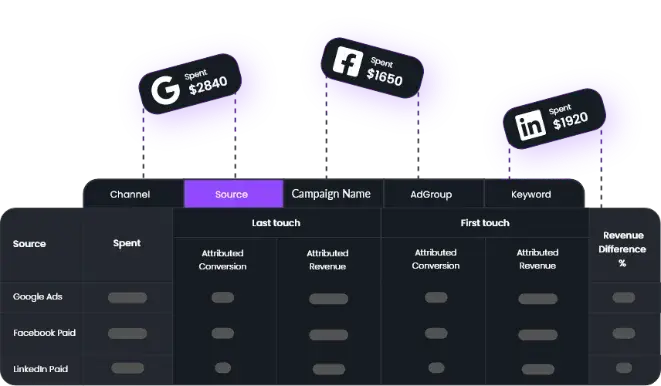
DiGGrowth, is a comprehensive marketing analytics platform tailored to stitch together every aspect of your customer’s journey. From Customer tracking interactions with your brand to understanding channel preferences and revenue paths, DiGGrowth consolidates vital customer data, empowering you with actionable insights for strategic decision-making.
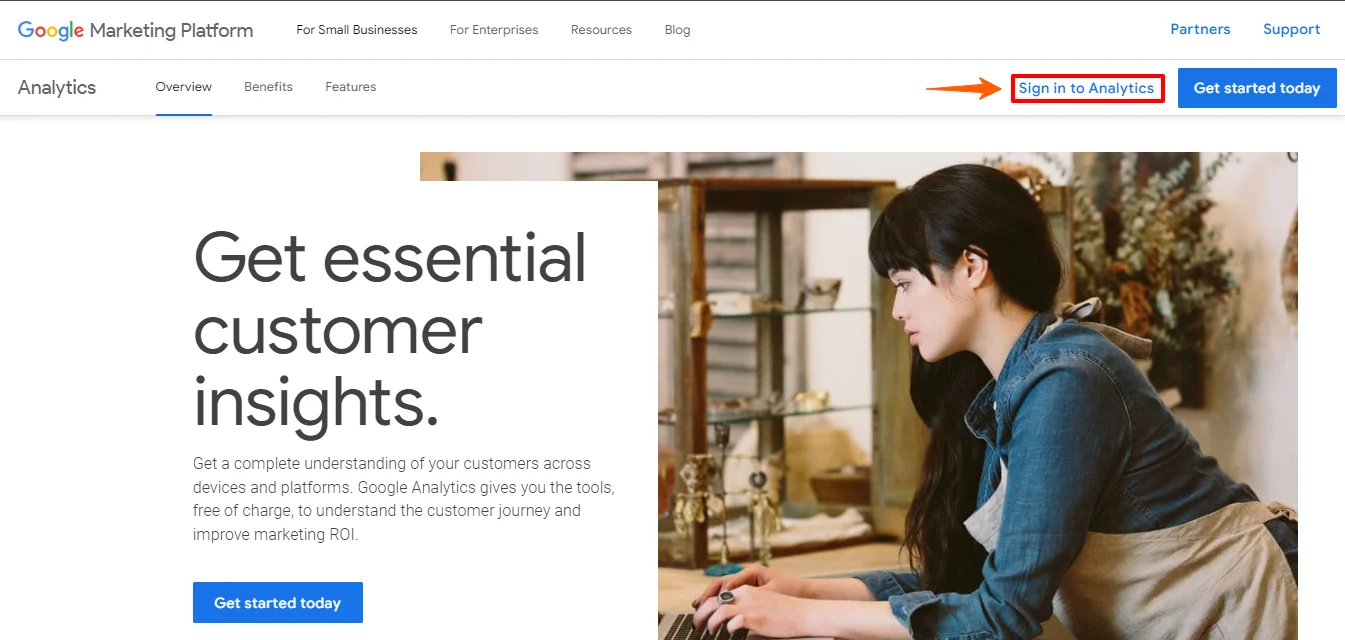
As a staple in SEO analytics, Google Analytics provides comprehensive data on website traffic, user behavior, and conversions. It offers insights into key metrics like traffic sources, pageviews, bounce rates, and more, helping you understand the effectiveness of your SEO efforts.
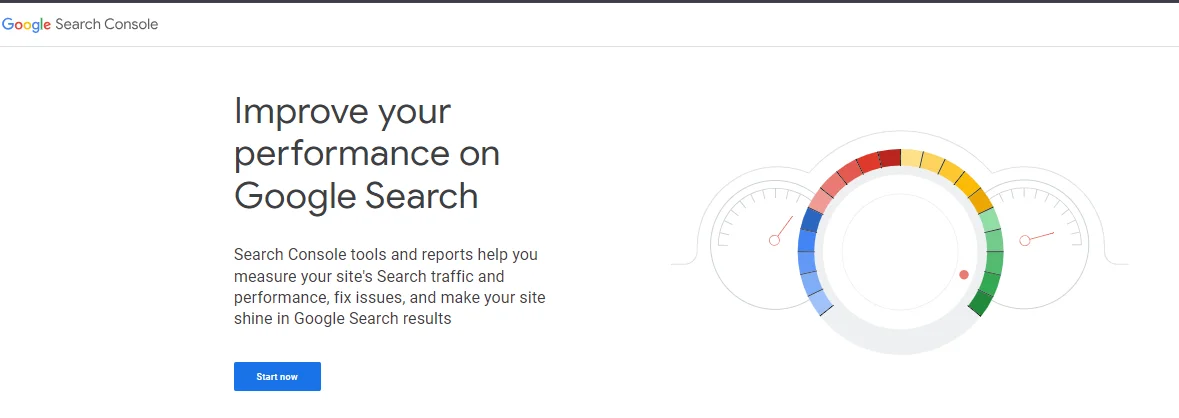
Formerly known as Google Webmaster Tools, Google Search Console offers valuable insights into your website’s performance in Google search results. It provides data on search queries, click-through rates, indexed pages, and crawl errors, enabling you to identify and fix issues that may impact your search visibility.
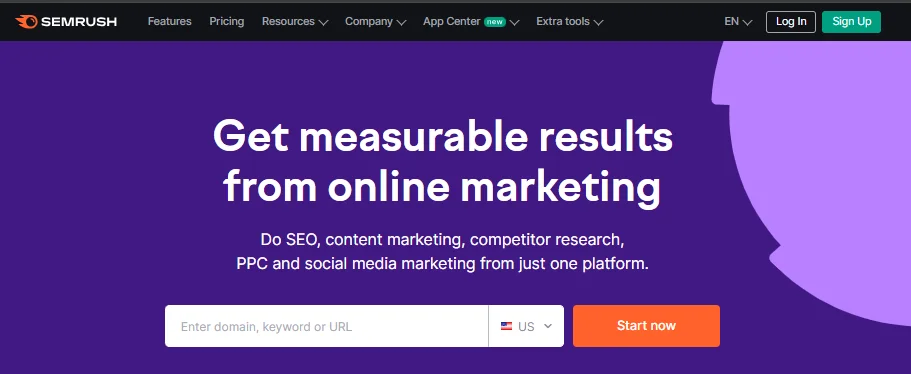
SEMrush is a versatile SEO tool that offers a range of features for keyword research, competitive analysis, and site auditing. It provides valuable data on keyword rankings, backlinks, and advertising insights, helping you uncover opportunities and optimize your SEO strategy.

Ahrefs is another powerful SEO tool specializing in backlink analysis, keyword research, and competitor analysis. It offers insights into domain authority, keyword difficulty, and content gaps, allowing you to refine your SEO strategy and improve your website’s search rankings.
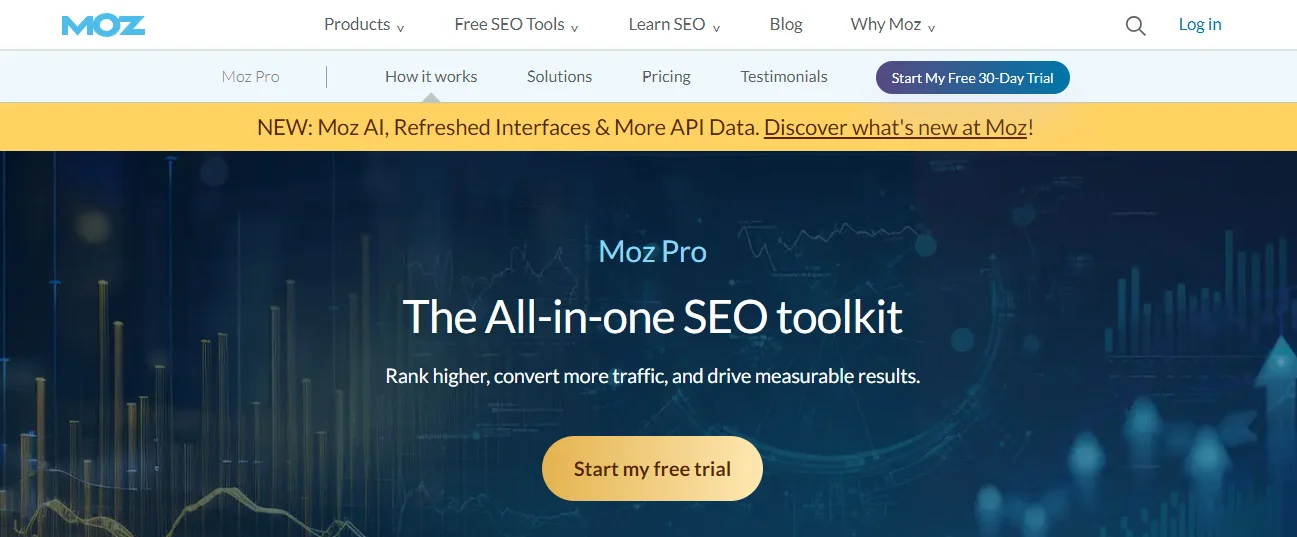
Moz Pro offers SEO tools for keyword research, site auditing, and rank tracking. It provides actionable insights into on-page optimization, link-building opportunities, and local SEO performance, helping you optimize your website for maximum visibility and traffic.
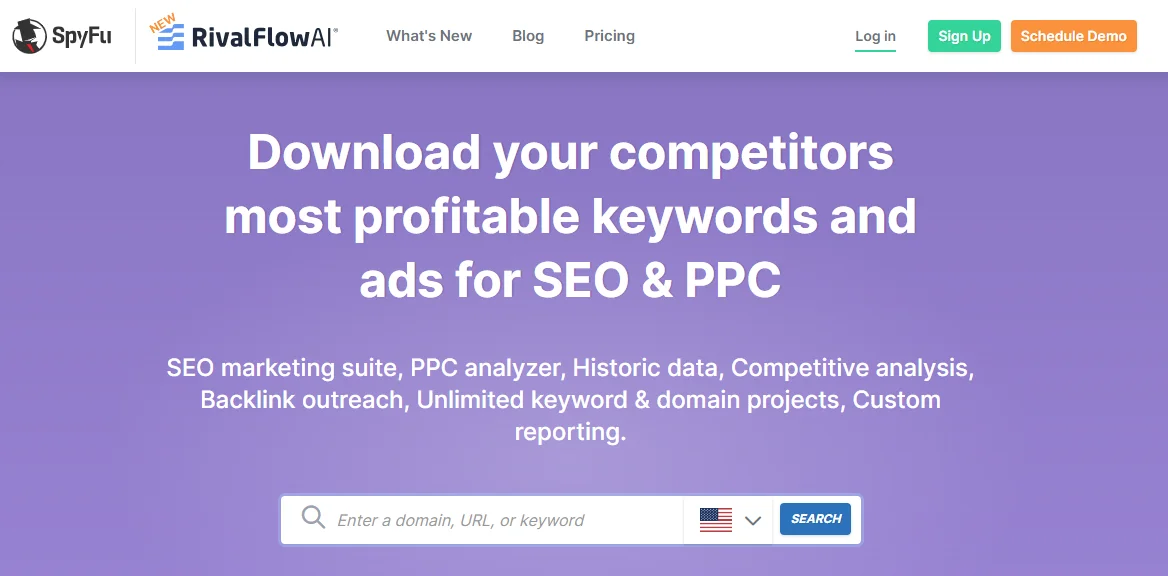
SpyFu is a competitive intelligence tool that allows you to spy on your competitors’ SEO strategies. It provides insights into their organic and paid search keywords, ad campaigns, and backlink profiles, enabling you to identify opportunities and stay ahead in the competitive landscape.
Continuous Learning and Staying Updated with SEO Trends
Continuous learning and staying updated with the latest SEO trends and practices are essential for a successful SEO strategy. Following authoritative sources like Search Engine Journal, Moz, and Google’s official channels provides valuable insights into algorithm changes and emerging trends.
Networking with fellow marketers and SEO professionals through conferences and online communities fosters knowledge sharing and collaboration. By remaining adaptable and committed to staying informed, SEO practitioners can navigate the dynamic digital landscape effectively, ensuring their strategies remain effective and their websites maintain a strong presence in search engine results.
Key Takeaways
- Integrating Google Analytics with your SEO strategy offers valuable insights and enables data-driven decision-making.
- Analyzing organic search traffic provides insights into user behavior and areas for improvement in SEO strategies.
- Understanding and interpreting SERP rankings helps optimize website visibility and performance in search engine results.
- Competitor SEO analysis offers insights into industry trends and identifies improvement opportunities in your SEO strategy.
- Continuous learning and staying updated with SEO trends are essential for maintaining a strong online presence and effective SEO strategies.
Conclusion
Mastering SEO analytics is vital for navigating the ever-evolving digital landscape. By embracing data-driven strategies and continuous adaptation, marketers can unlock the full potential of their SEO efforts. Remember, the journey to SEO success is ongoing, requiring persistent analysis and optimization. With a commitment to data-informed decision-making, measurable results and a prominent online presence are within reach.
Are you ready to elevate your SEO game? Let’s Talk!
Contact info@diggrowth.com for expert guidance and support. Take the first step towards maximizing your online presence today!
Ready to get started?
Increase your marketing ROI by 30% with custom dashboards & reports that present a clear picture of marketing effectiveness
Start Free Trial
Experience Premium Marketing Analytics At Budget-Friendly Pricing.

Learn how you can accurately measure return on marketing investment.
Additional Resources
How Predictive AI Will Transform Paid Media Strategy in 2026
Paid media isn’t a channel game anymore, it’s...
Read full post postDon’t Let AI Break Your Brand: What Every CMO Should Know
AI isn’t just another marketing tool. It’s changing...
Read full post postFrom Demos to Deployment: Why MCP Is the Foundation of Agentic AI
A quiet revolution is unfolding in AI. And...
Read full post postFAQ's
To analyze web traffic with Google Analytics, log in to your account and navigate to the "Reports" section. Here, you can explore metrics like traffic sources, user behavior, and conversions, providing insights into website performance and audience engagement.
Key SEO metrics include organic traffic, conversion rates, bounce rates, keyword rankings, and backlink quality. These metrics offer insights into website visibility, user engagement, and search engine ranking, guiding optimization strategies for improved performance and online presence.
Businesses can analyze competitor SEO strategies to identify opportunities and refine their own approach. By examining competitor content, backlink profiles, keyword rankings, and site structure, businesses can uncover insights to enhance their SEO tactics and gain a competitive edge in search engine results.


